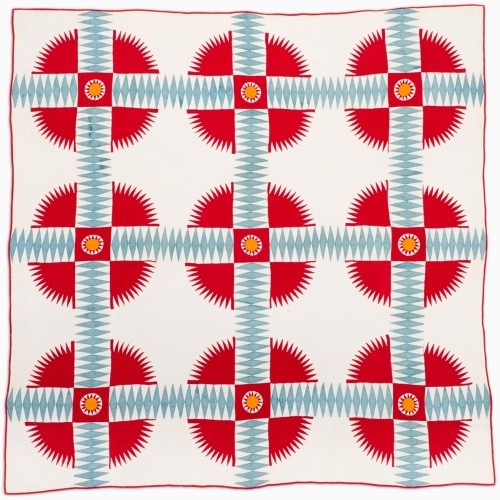This quilt is made from little scraps of fabric, requiring expert sewing skills by its maker because of the many small stitches and the intricate saw tooth outlines.
New York Beauty QuiltI am the Quilt Research Fellow Olivia Joseph — recently hired to get a better understanding of Mingei’s quilt collection — and to look deeper into the stories and histories which exist in these textiles. This focus resonates with my interest in how socio-cultural and political systems are reflected in the objects people create! My Quilt Research Fellow position is made possible through support from the Terra Foundation for American Art.
A vast majority of the American quilts in the Museum’s collection were donated by quilt historian and collector Pat L. Nikols. I’ve had the opportunity to learn about them directly from Pat and Leah Zieber — a quilt historian who has worked closely with Pat. Through our conversations it became clear that there is a lot to unpack when it comes to quilts, so let’s start with the basics — what are these multi-layered textiles?
























